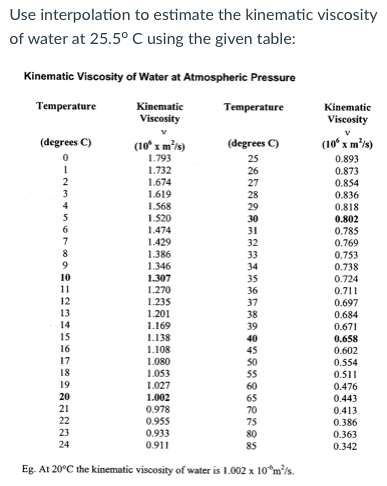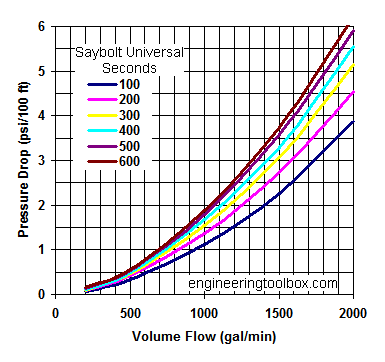

Feel free to contact us for any feedback. Lenntech BV is not responsible for programming or calculation errors on this sheet. You need to know the length (in meters) of the pipe. The viscosity of water at 20 C is 1.0020 millipascal seconds (which is. If you know the number of Reynolds, you can calculate the pressure in a pipe line. The quantity defined above is sometimes called dynamic viscosity, absolute. When the stream is not turbulent (laminar), the velocity and direction of the particles is always the same. A turbulent stream is a stream where the velocity of the particles have random directions. With that you know whether the stream is turbulent or not. When you know the viscosity, you can amongst others calculate the number of Reynolds. The unit of dynamic viscosity is the Poiseuille (=Pa

When the resistance gets higher, the viscosity get greater with it.

The tests used for the statistical analysis were Kolmogorov-Smirnov and Shapiro Wilk tests, one-way ANOVA, and independent sample t-test. Absolute or dynamic viscosity is used to calculate Reynolds Number to determine if a fluid flow is laminar, transient or turbulent.

The measurements were performed using a circulating water bath calibrated with a thermostat, and the dynamic viscosity measurements were noted in Centipoise (Cps). The influence of temperature (45☌, 60☌) and concentration (5.25%, 2.6%, and 1.25%) on the dynamic viscosity of NaOCl was also evaluated. The following thermodynamic properties are calculated: density water, dynamic viscosity water, kinematic viscosity water, specific inner energy water, specific enthalpy water, specific entropy water, specific isobar heat capacity cp water, specific isochor heat capacity cv water, thermic conductivity water, speed of sound water. The aim of this study was to assess the influence of temperature and concentration on the dynamic viscosity of sodium hypochlorite in comparison with 17% EDTA and 2% chlorhexidine gluconate.ĭynamic viscosity measurements of sodium hypochlorite, EDTA (17%), and chlorhexidine gluconate were measured using a rotational digital viscometer at room temperature (25☌).


 0 kommentar(er)
0 kommentar(er)
